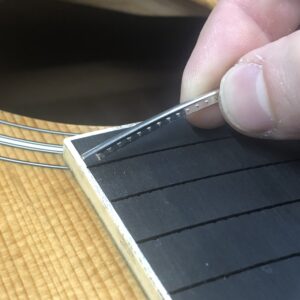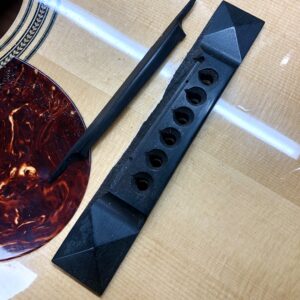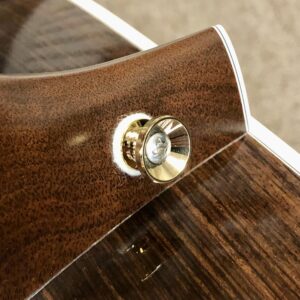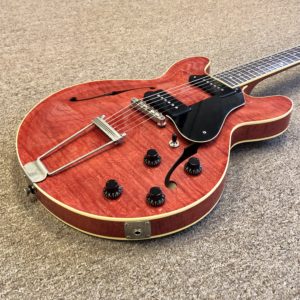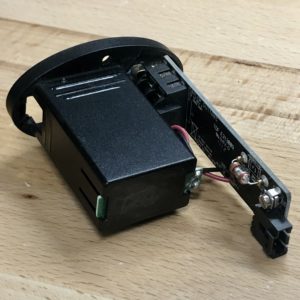Gibson Hummingbird and J-200 Pickguards
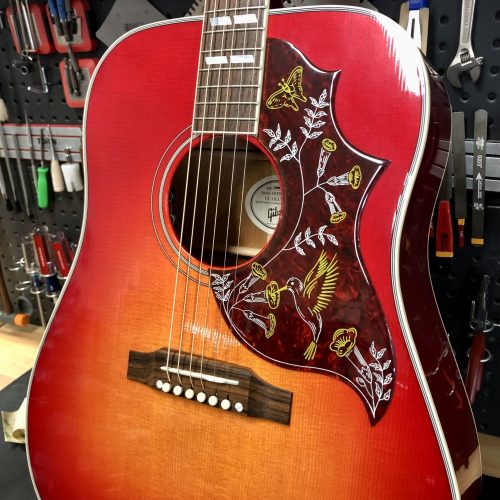
The pickguard art featured on the Gibson Hummingbird, as well as the “flower and vine” pattern used on the J-200, are defining features of the respective models. Originally the most expensive guitars in Gibson’s catalog, their unique pickguard’s make these instruments instantly recognizable.
While the artwork is largely the same, different manufacturing techniques have been used over the company’s history. Traditionally, the pickguards were hand painted and engraved. Later on, in an effort to save on the considerable skilled labor required, Gibson made the decision to simply print the artwork on top of a piece of plastic pickguard material. This practice was later discontinued, likely due to the tendency for the printing to wear away with repeated use of the guitar.
In recent years, the pickguards have been manufactured so that the design is printed on top of a faux tortoiseshell colored plastic, with a fairly thick layer of clear plastic on top to protect the artwork. These guards are noticeably thicker, softer, and more pliable than what is typically found on other acoustic guitars. They are sometimes derisively referred to as “flubber” pickguards; A reference to their unusual consistency and a popular children’s movie from the late 1990’s.
Lifted Gibson "Flubber" Acoustic Guitar Pickguards
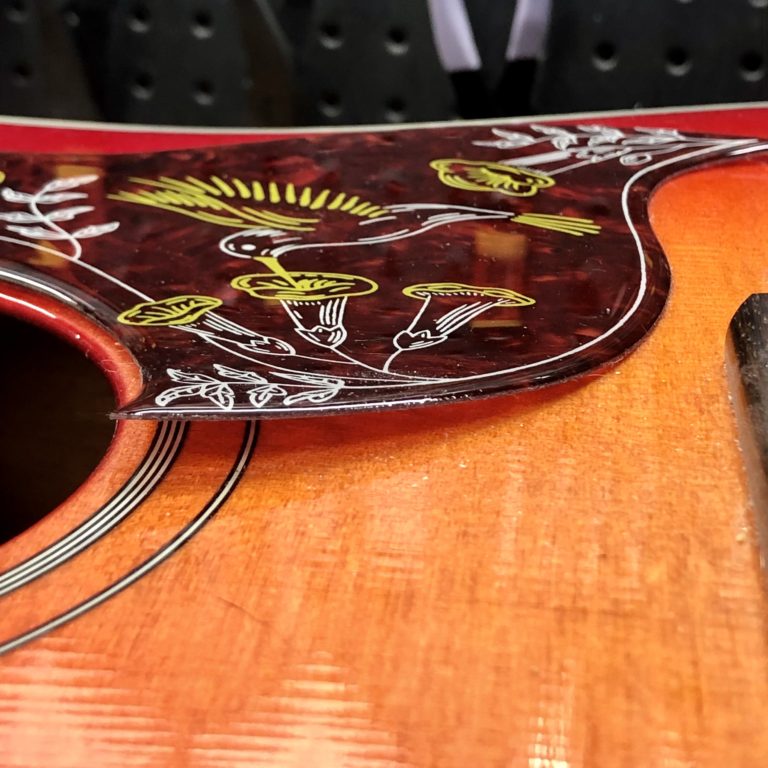
In part due to the flexible material used, these pickguards are more likely to lift and curl around the edges than other modern pickguards. Occasionally, these pickguards can present with rather unsightly air bubbles inside of them too. In the case of this instrument, one of the lifted corners was up high enough to actually interfere with the strings and effect performance.
Fortunately, unlike many vintage acoustic guitar pickguards, these are adhered with double sided tape on top of the instruments finish; This makes them comparatively much easier to remove and reinstall or replace.
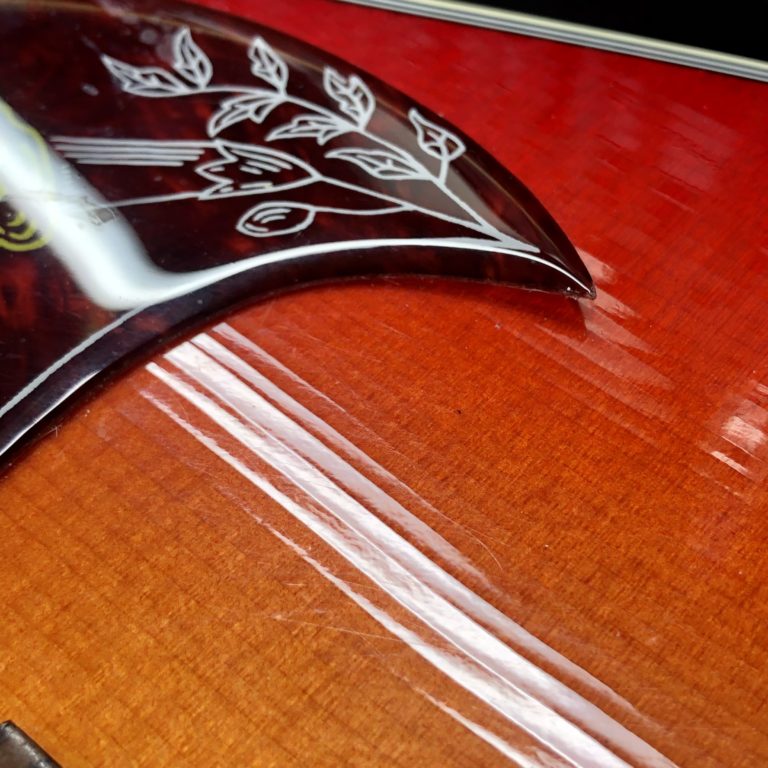
It’s worth taking a minute to emphasize that, while the material plays a role, the user often provides the catalyst: poor humidity control.
In the photos, one can see that the instrument’s cherry sunburst finish is visually very rippled and wavy. These ripples can also be felt and are often an indication that an instrument has been stored in dry conditions for an extended period of time.
Among the array of damage that this neglect can cause, the shrinking of the instrument’s wooden guitar top and nitrocellulose-lacquer finish puts stress on the adhesive that joins the pickguard to the instrument, eventually allowing it to separate and lift.
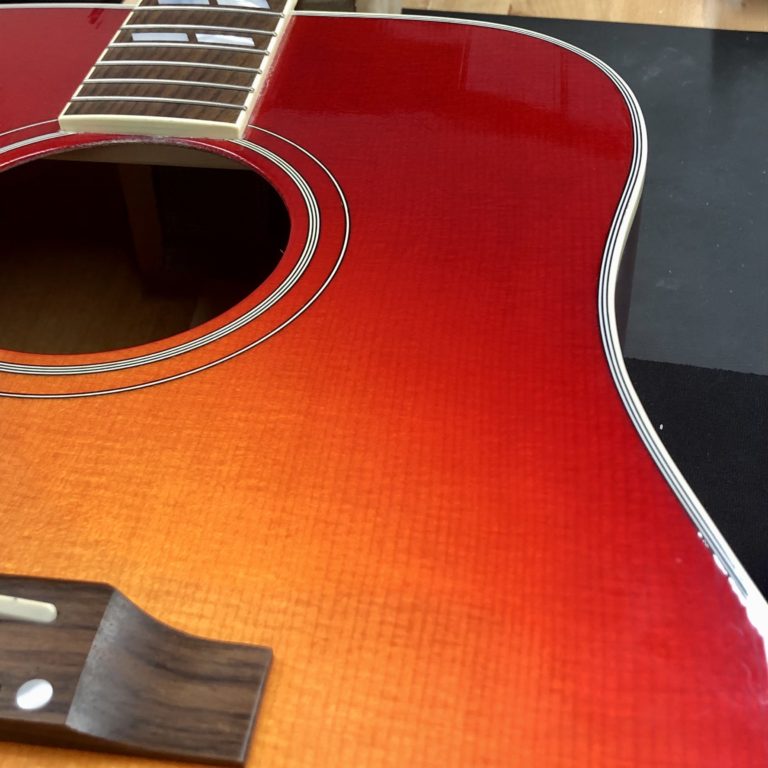
With the aid of carefully applied heat, we were able to fully remove the pickguard from the guitar without further damage to it, or the instrument. A mild solvent was then used to remove the leftover adhesive residue.
This one came off clean enough that, if the client wanted, it could have been left without a pickguard. However, lovers of these guitars know that the aesthetics of the oversized shape, and the canvas that it presents, are one of the primary appeals of these models.
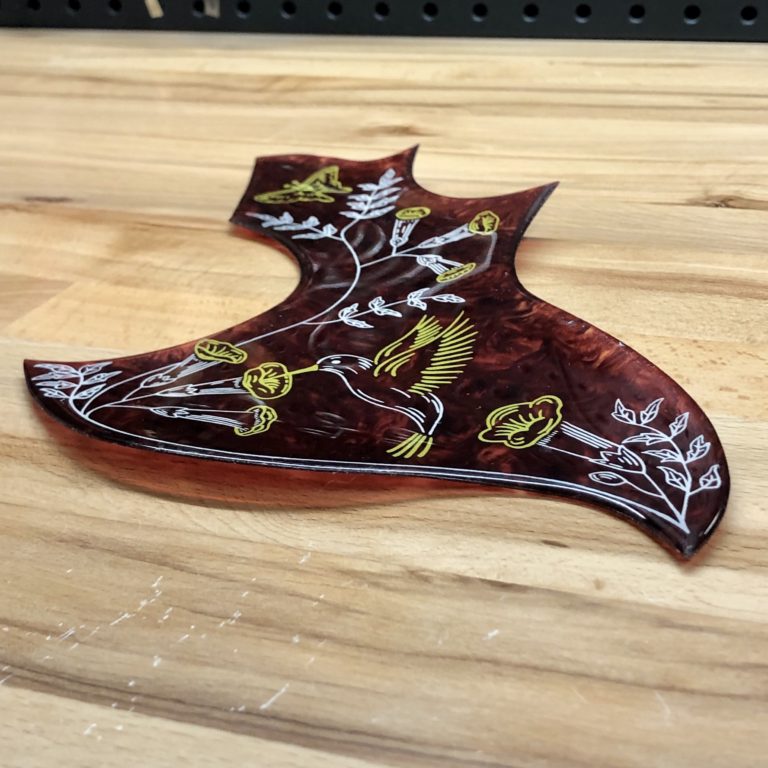
As you can see by the photo, in its natural state, the pickguard is very curled. As such, it is not likely to hold flush to the guitar’s top long term. In our opinion, replacement with a pickguard made from a different material is likely to be the best longterm solution.
Unfortunately, at the time of writing, the manufacturer has not altered their design to address this common problem. Gibson does not make replacement Hummingbird pickguards available to the public.
However, there are some aftermarket options available: ALLPARTS sells an inexpensive one made of a more typical, hard plastic, material. Unfortunately, much like the previous iteration of Gibson’s pickguard, the design is printed on top and it may wear away with use. In our opinion the ALLPARTS pickguard also aesthetically has a “cheaper” look to it. For a top notch replacement, MV Custom Guitars offers vintage correct, hand painted and engraved, pickguards.
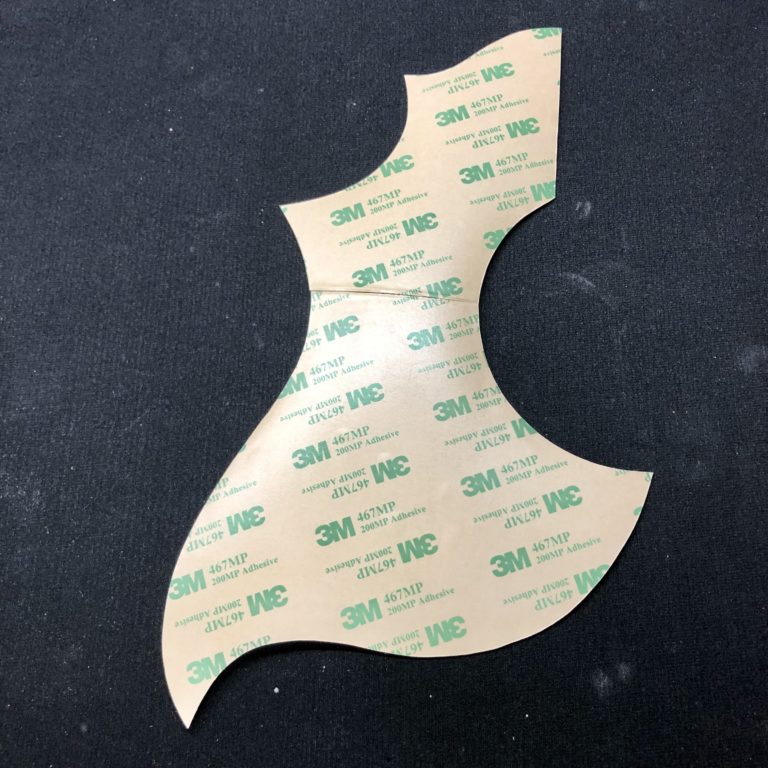
In this case, the client requested that we simply replace the compromised adhesive backing and re-secure the original pickguard in position. While it is likely to lift again, this is inexpensive, low risk, and maintains the originality of the guitar.
With the work on the pickguard complete, we will finish dialing in the new saddle and perform a setup before releasing this Hummingbird back into the wild.
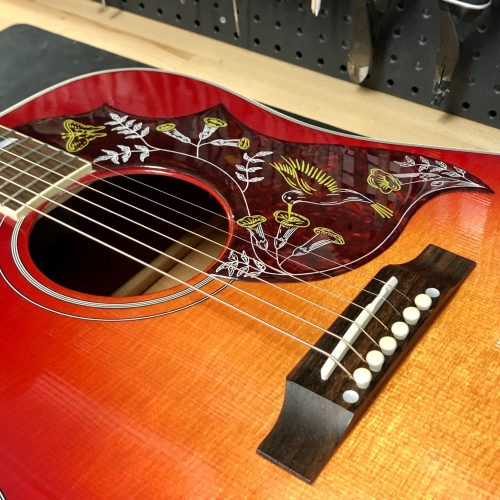

Erik Salomon - Calico Guitarworks Owner / Head Technician
Tech Talk articles are part of an ongoing effort to provide clear and detailed answers to common questions about guitar maintenance, modifications, and repairs.
While not intended as a step-by-step guide to servicing your own instrument, we hope that you will find value in the information provided.

Great Repairs Start With The Right Parts
Many of the parts mentioned in our blogs are available for purchase at:
GuitarRepairParts.com
Enter the code "TechTalk10" at checkout for 10% off your first order.
About Calico Guitarworks
Calico Guitarworks is the area’s premier destination for fretted musical instrument care and maintenance. Owned and managed by Erik Salomon, the shop is dedicated to providing quick, honest and reliable service. The staff at Calico Guitarworks has a combined 25+ years of professional guitar repair experience. Sharing the knowledge that we accumulate in this focused pursuit is at the core of what we do. Learn more About Calico Guitarworks, explore our Frequently Asked Questions, or Contact us with a specific request.


